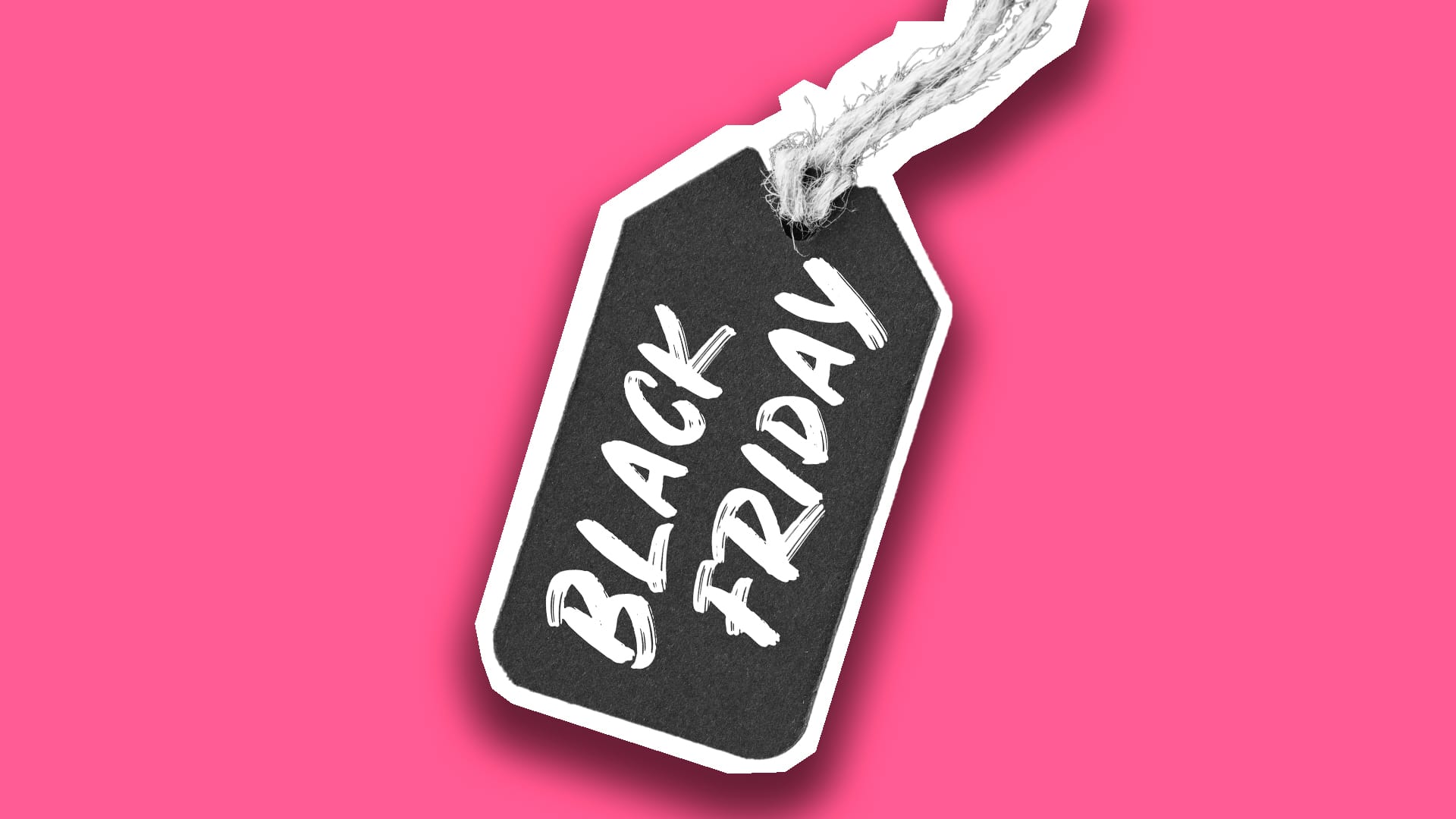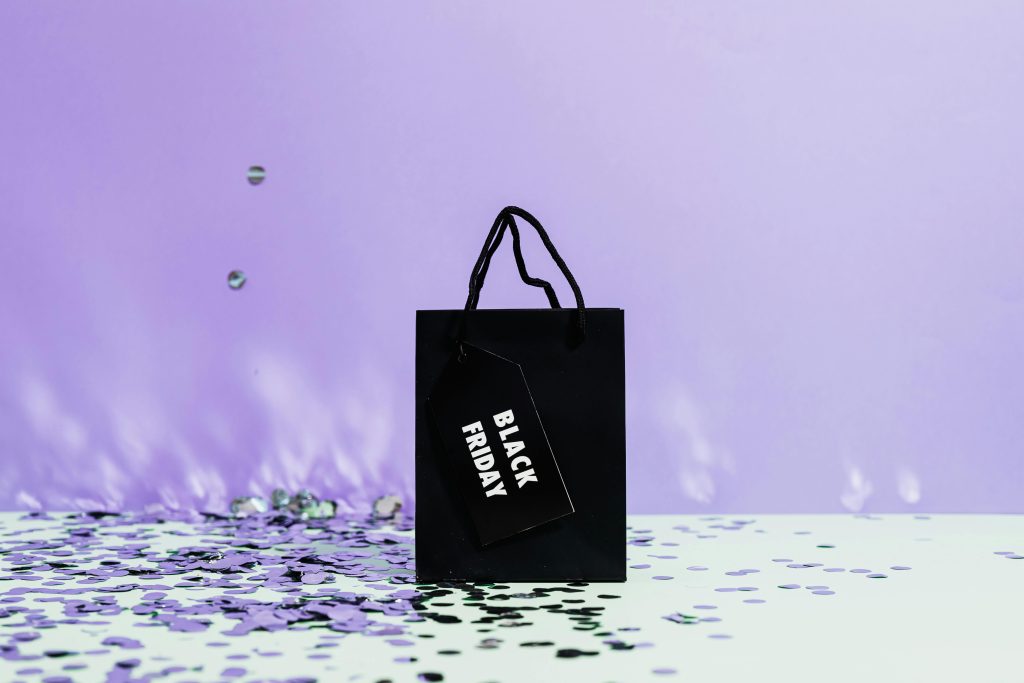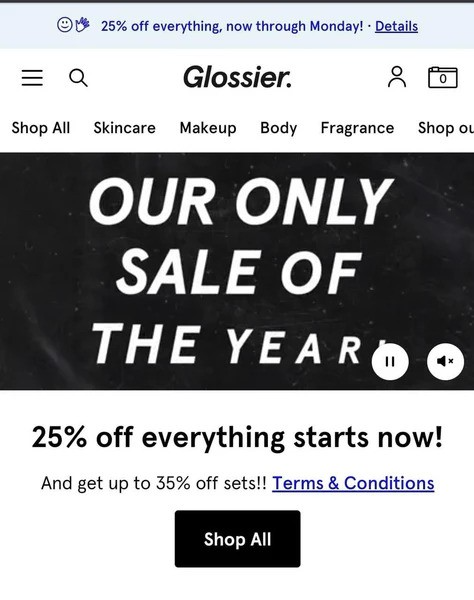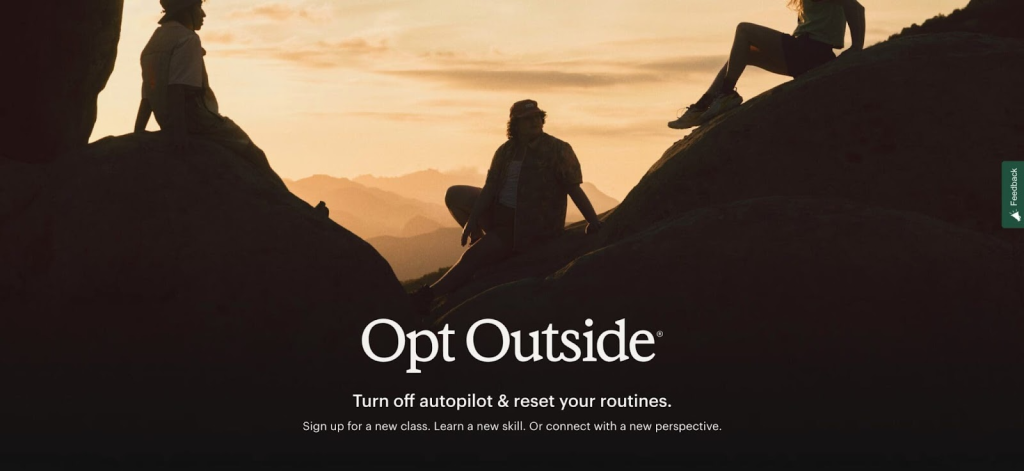How to Plan and Launch a Black Friday Campaign: Tips for Brands and Businesses

Black Friday is no longer just a shopping day. For businesses, it’s a chance to boost sales, reach new customers, and strengthen brand visibility. Originally the day after Thanksgiving in the U.S., it now signals the start of the holiday shopping season worldwide. Shoppers anticipate big discounts, and brands of all sizes participate to get a slice of the holiday spend.
For social media managers and marketers, a well-planned Black Friday campaign can make a real difference. Here’s how to plan, create, and execute a campaign that stands out in 2025.
What Is Black Friday and Why Is It Important?
Black Friday has become a shopping tradition, known for its massive sales and special promotions. Running a thoughtful campaign during this time can bring multiple benefits:
- Capture Holiday Spending: Shoppers are ready to buy, and your promotions can make your brand the obvious choice.
- Increase Visibility: Stand out in a busy market with eye-catching campaigns.
- Attract and Retain Customers: Bring in new buyers while giving loyal customers deals that keep them engaged.
- Clear Inventory: Use promotions to move older stock before the year ends.
- Boost Revenue: Black Friday and Cyber Monday often contribute a significant chunk of annual sales.
Black Friday Campaign Timeline: From Planning to Execution
With Black Friday becoming more competitive every year, having a well-organized campaign is Planning early is key to competing successfully. Here’s a month-by-month guide from September to post-Black Friday.

September: Initial Planning
The groundwork you lay in September sets the direction for your entire campaign. At this early stage, the key is to focus on strategy, product selection, and understanding your audience.
1. Set Campaign Goals and KPIs
Decide what success looks like. Revenue, new customers, conversion rates, and average order value are common metrics.
Common KPIs include:
- Revenue Targets: Monitor overall sales generated.
- Customer Acquisition: Measure the number of new customers gained.
- Conversion Rates: Track the percentage of visitors who make a purchase.
- Average Order Value (AOV): Keep an eye on the average transaction amount.
- Return on Ad Spend (ROAS): Calculate the effectiveness of your advertising spend in relation to sales generated.
Historical data from previous campaigns is your friend to set realistic goals. If you’re a first-timer, industry benchmarks can help guide you.
2. Determine Your Target Audience
Understanding your audience is how to create a campaign that resonates with them. Start by segmenting your audience based on things like purchase history, browsing behavior, and demographics.
Create tailored messages for different groups, such as loyal customers vs. new shoppers.
- Loyal Customers: Offer exclusive early access to your best deals.
- New Shoppers: Provide an introductory discount or bundle to entice first-time buyers.
Tools like Google Analytics and Facebook Insights can help you dive deep into customer demographics and behavior. Consider using surveys or polls to gather direct feedback on customer preferences.
3. Select Products or Services to Promote
Decide which products or services will take the spotlight during your campaign. Review your inventory to highlight best-sellers or new arrivals. Black Friday is also a great time to clear slow-moving stock by offering significant discounts. Bundling older items with best-sellers can help increase your average order value and encourage larger purchases.
4. Develop Creative Concepts
Now is the time to craft creative concepts for your campaign. Make sure your messaging is aligned with your overall brand and appeals directly to your audience. You need to decide whether to focus on urgency, exclusivity, or value in your messaging.
Some examples of each:
- Urgency: “Hurry! Only 24 hours left for our best Black Friday deals!”
- Exclusivity: “Be the first to shop—VIP early access starts now.”
- Value: “Save big with our Black Friday bundles—buy 2, get 1 free!”
Visuals, like GIFs or countdown timers, can build excitement and convey urgency before the sales begin.
5. Outline Your Email Marketing Strategy
Design an email sequence that builds anticipation, offers previews, and gives early access. Personalization is key for engagement.
Segment your list based on factors like purchase history or engagement levels, and tailor the messaging accordingly.
For example, send VIP customers early access deals, while new subscribers may receive introductory discounts. This will help each email resonate with its intended audience.
6. Conduct Competitor Analysis
Study your competitors’ past Black Friday campaigns to discover trends in offers, pricing, and engagement tactics. Determine what you can do (or should avoid) to capitalize on industry trends. For instance, if a competitor offers free shipping with a minimum purchase, you might counter with a lower minimum or a free gift.
Use tools like Metricool to monitor competitors’ social media performance. Analyze what worked for them and where they fell flat, and apply those insights to your own campaign.
October: Strategy Finalization and Content Creation
By October, you should be finalizing your strategy and creating the content that will drive your campaign. This includes designing visuals, planning social posts, and creating email templates.
1. Finalize Your Campaign Strategy
Lock in the details of your Black Friday promotions. Whether you’re offering tiered discounts, buy-more-save-more deals or time-limited offers now is the time to finalize the structure and schedule. Consider adding early bird specials to motivate customers to shop within the first few hours of Black Friday.
Make sure your budget is planned out and allocated across paid ads, social media, and email marketing. It’s best to prioritize these based on expected returns.
2. Create a Content Calendar
Create your content calendar across all platforms, so your campaign syncs with key shopping dates and promotions leading up to Black Friday.
Metricool’s visual calendar makes it easy to organize and schedule posts on Facebook, Instagram, TikTok, Threads, and more. You can see the best times to post based on audience engagement, generate captions with AI, and connect Canva or Google Drive to keep all your visuals in one place.
3. Design High-Quality Visuals
Your visuals are the first impression of your campaign, so make them count. Design specific visuals for social media, email campaigns, and display ads. Short-form videos, such as teaser clips or product previews, can significantly boost engagement.
With Metricool’s Canva integration, you can easily design and upload professional images directly into your content calendar for scheduling.
4. Set Up Analytics Tools
Make sure all your tracking is ready before the campaign goes live. This includes Google Analytics, Facebook, and email tracking. Monitor traffic, sales, and engagement, and create custom reports to keep an eye on metrics like conversion rates, traffic sources, and bounce rates. Metricool also gives real-time insights for social media and ad campaigns, letting you adjust your strategy on the fly.
5. Start Teasing Promotions
Build anticipation by dropping hints about your deals on social media and email. Early access offers make loyal customers feel special. Use Instagram and Facebook Stories to share sneak peeks or announce perks for early shoppers. Partnering with influencers can help your promotions reach a wider audience and create buzz before the big day.
6. Plan Personalized Offers
Utilize customer data to craft personalized offers that resonate with different segments of your audience. Personal touches, like dynamic content or VIP access, foster exclusivity and boost engagement.
For instance, sending a personalized email to loyal customers with a special discount as a token of appreciation can add a sense of exclusivity and encourages engagement “As a thank you for being a valued customer, enjoy an extra 10% off our exclusive Black Friday deals!”
Early November: Pre-Black Friday Prep
November is when you turn up the heat and start getting your audience ready for the big day. It’s all about ramping up excitement and making sure everything is working smoothly behind the scenes.
1. Launch Pre-Black Friday Content
Give loyal customers a sneak peek of your deals with early access offers or soft launches. Partner with influencers to show products, share behind-the-scenes moments, or host live streams to generate anticipation.
2. Engage Your Audience
Interactive content is a powerful way to boost engagement in the lead-up to Black Friday. Use polls, contests, and Q&A sessions to actively involve your audience on social media.
Encourage user-generated content (UGC) by offering special deals in exchange for content shares. This both boosts engagement and helps spread the word through your customers’ networks.
3. Prepare Email Lists and Automation
Segment your email lists based on past purchases or browsing habits. Set up automated sequences for abandoned carts, countdown reminders, and personalized deals to make sure your messages reach the right people at the right time.
4. Test Your Website
A smooth shopping experience is key for Black Friday. Make sure your site can handle higher traffic by running load tests.
Don’t forget mobile shopping, since many shoppers use their phones. Go through the entire shopping process, from searching for products to completing checkout, and check that payment options, discount codes, and promotions all work properly across all devices.
Mid-November: Ramp Up Promotions
As Black Friday gets closer, it’s time to boost visibility, create urgency, and make sure your customers are ready to shop.
1. Increase Your Promotional Content
Post more often across all channels to keep your audience excited. Mix paid ads, organic posts, and email campaigns to maintain momentum. Retarget visitors who engaged with your content earlier to bring them back.
Try different headlines, visuals, and calls-to-action to see what works best. A/B testing during this period can help you understand what drives the most conversions.
2. Use Countdown Timers
Countdown timers are a simple way to create urgency. Add them to emails, your website, and social media posts to show that deals won’t last. You can use dynamic timers in emails that adjust when opened, while static timers work well on social posts and site banners. This helps encourage shoppers to act quickly.
3. Prepare Customer Service
Expect more questions during Black Friday, so make sure your support team is ready. Live chat can help customers get answers fast and reduce abandoned carts.
Automate replies for common questions like shipping times, returns, and stock levels. This lets your team focus on more complex inquiries while keeping customers satisfied.
4. Finalize Cyber Monday Plans
Keep the momentum going by preparing Cyber Monday deals ahead of time. Share these promotions early to maintain interest through the weekend. You can also mix up the offers, for example by giving discounts on products that weren’t included in your Black Friday sale.
For instance, a clothing brand might discount accessories and smaller items on Black Friday, then save bigger items like jackets or boots for Cyber Monday.
Black Friday Week: Full Campaign Execution
Black Friday week is the moment everything comes together. Make sure every part of your campaign runs smoothly and track performance as it happens.
1. Launch Your Main Campaign
Coordinate all your channels including social media, email, ads, and your website for a consistent and impactful launch. Keep messaging clear and attention-grabbing across every platform.
Schedule posts advance using Metricool’s scheduler. This helps your promotions go live on time, reaching your audience at peak moments without last-minute stress.
2. Monitor Campaign Performance
Tracking your campaign in real time is key to getting the best results. Keep an eye on metrics like website traffic, conversion rates, and how your ads and emails are performing.
Use tools like Google Analytics to set up alerts so you are notified if traffic or conversions drop. This allows you to react quickly by adjusting ads, shifting budgets, or refining email campaigns before any issues affect performance.
3. Engage with Customers
Keep an eye on your social media channels and website for customer questions or issues. Responding quickly helps build trust and prevents shoppers from abandoning their carts.
Prepare pre-written replies for common questions about deals, shipping, and stock. This lets your team answer efficiently while keeping a personal touch.
4. Implement Flash Sales
Keep the excitement going with flash sales or limited-time offers throughout the day. These surprise promotions can attract customers who missed earlier deals or were unsure about buying. Time-sensitive offers create urgency, encouraging quick action and boosting conversions.
Post-Black Friday: Analysis and Follow-Up
The work doesn’t stop when Black Friday ends. Reviewing campaign performance, collecting customer feedback, and planning future engagement are how you build long-term success.
1. Cyber Monday Promotions
As Black Friday ends, shift your focus to Cyber Monday. Keep the momentum going with new deals or exclusive discounts on products that weren’t part of your Black Friday sale. You can also introduce bundles or highlight different product categories to attract more customers.
Send teaser emails or social posts before Black Friday wraps up to remind customers about the upcoming Cyber Monday offers. Highlight what makes these deals special to build anticipation and encourage repeat visits.
2. Analyze Campaign Performance
After Black Friday, dive into the performance data to understand how your campaign fared. Use multi-channel attribution to identify which platforms drove the most conversions and which strategies performed best. Compare these results to your initial goals and KPIs to evaluate overall success. Metricool’s reporting tools allow you to track key metrics across social media, paid ads, and website traffic, offering a clear picture of your campaign’s impact.
This analysis will be invaluable for planning future promotions. Use insights from this year’s performance to refine your strategies for next year’s Black Friday or other major sales events.
3. Collect Customer Feedback
After Black Friday, review your performance data to see how the campaign went. Use multi-channel attribution to find out which platforms drove the most conversions and which strategies worked best. Compare these results with your initial goals and KPIs to measure overall success. Metricool’s reporting tools make it easy to track metrics across social media, paid ads, and website traffic, giving a clear view of your campaign’s impact.
Use the insights from this year to optimize your approach to next year’s Black Friday or other major sales events.
4. Plan Follow-Up Campaigns
Keep the momentum going after Black Friday with targeted follow-up campaigns. Use the customer data you collected to send retargeting ads or email sequences. For example, you can nurture new relationships by sending thank-you emails with product recommendations based on recent purchases.
You can also promote loyalty programs or offer special discounts to encourage more sales. Well-timed emails can help turn one-time Black Friday shoppers into repeat, long-term customers.
Do’s and Don’ts of a Successful Black Friday Campaign
Running a strong Black Friday campaign takes planning, attention to detail, and a focus on your customers. Follow these guidelines to boost sales while giving shoppers a positive experience.
Black Friday Marketing Campaign Do’s
- Start Planning Early: Begin preparing months ahead so everything is ready for a smooth launch.
- Communicate Offers Clearly: Be transparent about promotions, prices, and terms. Clear messaging avoids confusion and lost sales.
- Prepare Your Website: Make sure your site can handle heavy traffic and runs smoothly during peak times.
- Provide Great Customer Service: Respond quickly and helpfully to questions or issues to keep shoppers satisfied.
- Segment Your Audience: Tailor messaging for different groups, like loyal customers and new shoppers.
- Extend Deals Through Cyber Monday: Keep the momentum going with additional promotions after Black Friday.
- Use Festive Visuals: High-quality, seasonal designs help your campaign stand out.
- Create Urgency: Encourage action with countdown timers and limited-time offers.
- Highlight User-Generated Content: Share customer posts and reviews to build trust and social proof.
- Offer Exclusive Deals: Reward loyal customers or early-bird shoppers with special offers.
- Use Multiple Channels: Combine email, social media, paid ads, and SMS to reach your audience effectively.
- Optimize for Mobile: Your website and checkout processes need to work smoothly across different devices.
- Work with Influencers: Collaborate with creators to expand reach and add credibility.
- Personalize Offers: Use customer data to suggest relevant products or discounts.
Black Friday Marketing Campaign Don’ts
- Don’t Wait Until the Last Minute: Early planning prevents last-minute stress.
- Don’t Overcomplicate Offers: Keep promotions simple so shoppers understand them easily.
- Don’t Forget Existing Customers: Show loyal buyers they are valued with exclusive deals.
- Don’t Repeat Last Year’s Strategy: Analyze past campaigns and improve where needed.
- Don’t Skip Testing: Check emails, landing pages, and website functionality to avoid problems.
- Don’t Overwhelm Shoppers: Avoid sending too many messages. Focus on clear, strategic communication.
- Don’t Ignore Follow-Up: Continue engaging customers after purchases with thank-you emails or special offers.
Think Outside the Box: Creative Black Friday Campaign Examples
Black Friday is no longer just a rush of sales. Today, it’s a chance for brands to get creative, connect with customers, and leave a lasting impression.
Instead of only offering discounts, many companies are using unique approaches to build loyalty, increase brand visibility, and create memorable experiences. From encouraging thoughtful purchases to highlighting experiences over material goods, modern Black Friday campaigns can achieve much more than short-term sales. Here are a few brands that made their campaigns stand out:
The Ordinary’s “Slowvember”
The Ordinary approached Black Friday in a different way with their “Slowvember” campaign, encouraging thoughtful purchases instead of rushed, impulse buying. Rather than focusing on a single day, they offered a 23% discount on all products throughout the entire month of November.

By closing both their website and stores on Black Friday itself, The Ordinary gave customers time to research and consider their skincare needs. This approach highlighted the brand’s commitment to conscious consumerism and reinforced its focus on transparency and education.
Glossier’s “Only Sale of the Year”

For Glossier, Black Friday is the only sale of the year. This exclusivity creates urgency and excitement, giving customers just one chance to grab their favorite beauty products at a discount. By framing it as a rare event, Glossier uses scarcity to drive engagement and encourage shoppers to act quickly on this once-a-year opportunity.
REI’s #OptOutside Campaign
REI took a bold approach with their #OptOutside campaign, closing all stores on Black Friday and encouraging both customers and employees to spend the day outdoors embracing nature.

Instead of focusing on sales, the campaign highlighted REI’s commitment to sustainability and the outdoor lifestyle. By rejecting consumerism on the biggest shopping day of the year, REI strengthened their brand’s values and message, making Black Friday about experience over materialism.

